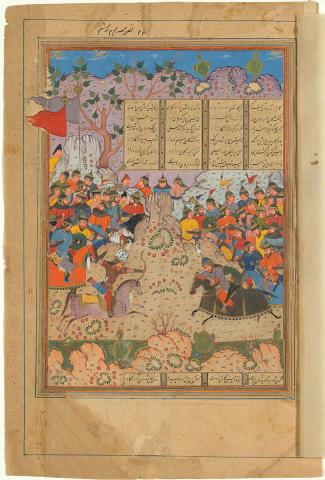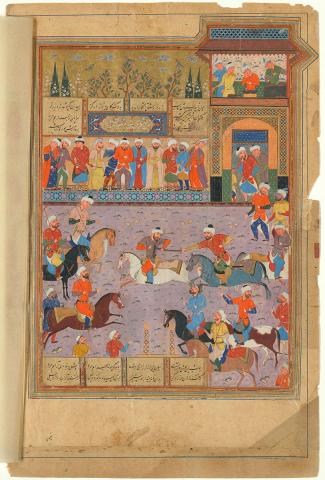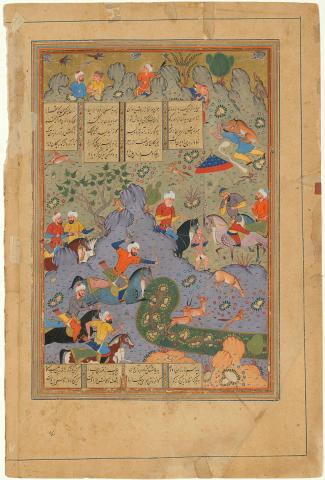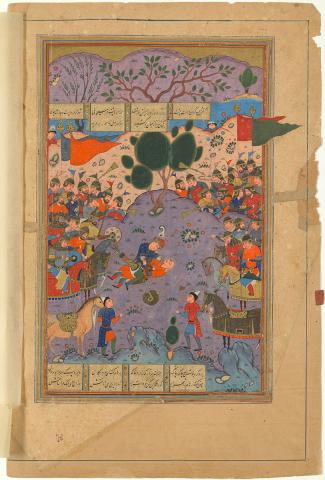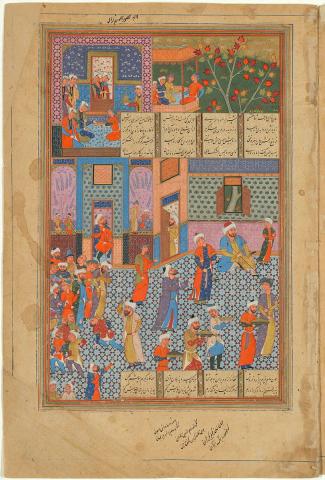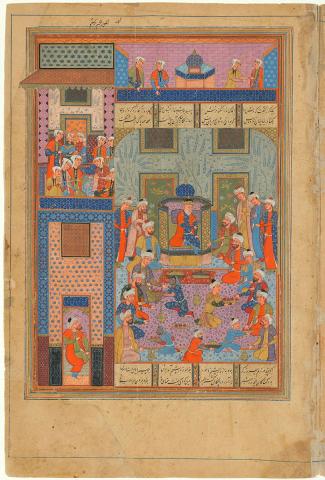Illustrations from the Shahnameh
By Abigail Bernal
February 2024
The Shahnameh, or The Persian Book of Kings, was originally composed by the poet Abu'l Qasim Firdausi (c.940/41–1020CE). Consisting of more than 50 000 rhyming couplets, 62 stories and 990 chapters, it is the longest poem ever written by a single author, and took Firdausi 33 years to complete.
Chronicling the history of a pre-Islamic Iran, which stretched from the Middle East to Central Asia, it begins with the mythological creation of the world, through the heroic age of the fourth and fifth centuries, to the last dynasty prior to Arab conquest in the seventh century.
Since Firdausi’s death, the epic has inspired admiration and a legacy of illuminated manuscripts, illustrating its stories of kings, royal families, heroes and demons through accounts of rivalry, revenge, victories, defeats and tragedy. These dispersed leaves are from a volume thought to have been compiled in Shiraz, in south-central Iran, during the Safavid dynasty (1501–1736). They capture a handful of dramatic narratives in visual splendour, with many of the stories belonging to the second heroic cycle that features figures like the great protector Rustam and the prince Siyavash.
Firdausi’s poem is often credited with preserving the Persian language and the oral stories of pre-Islamic Iran. The Shahnameh epic and its exquisite manuscripts continue to be revered in many countries, transcending ethnicity, religion, geography and time.

